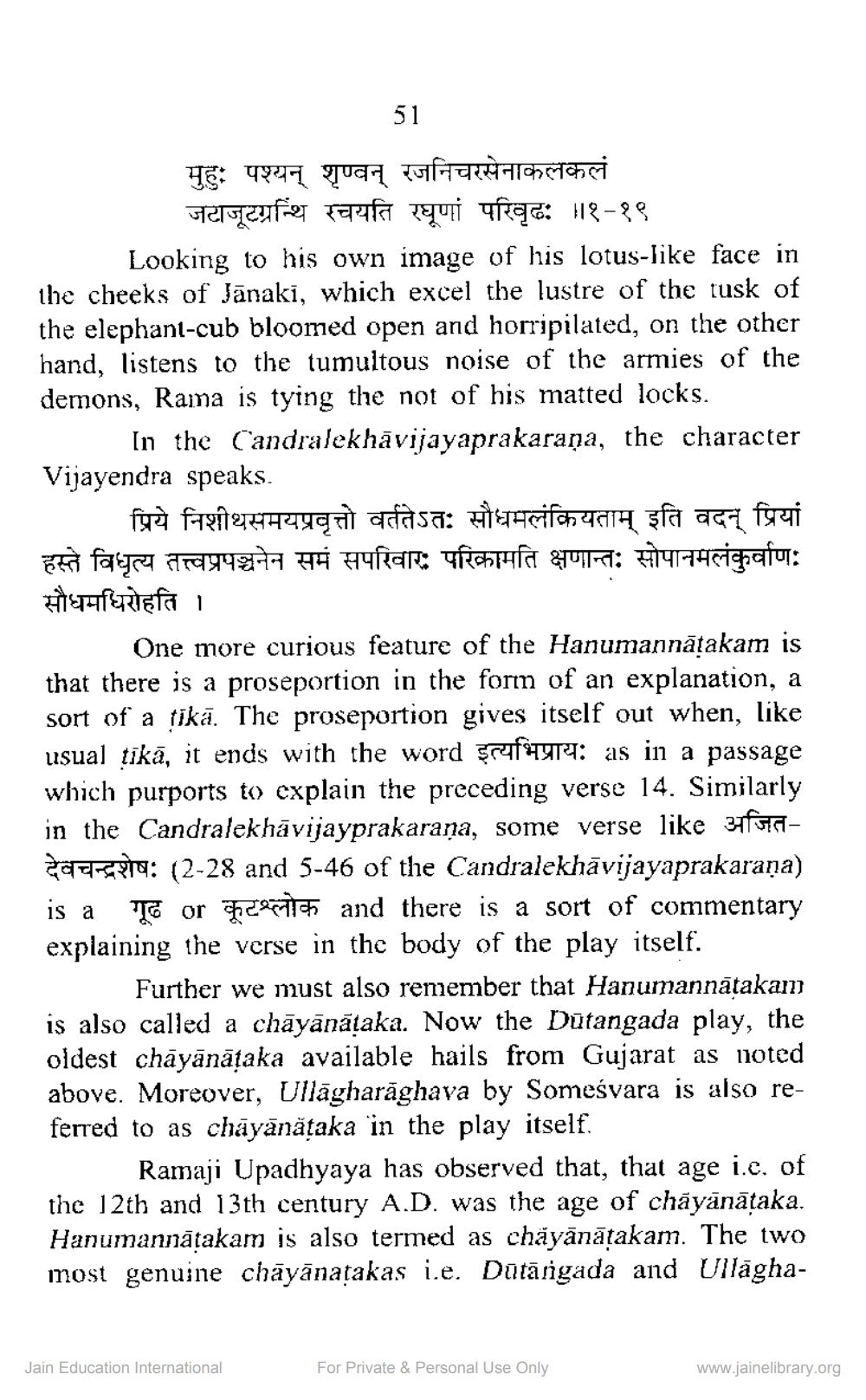Book Title: Hanumannatakam Date and Place of Its Origin Author(s): Vijay Pandya Publisher: ZZ_Anusandhan View full book textPage 6
________________ मुहुः पश्यन् शृण्वन् रजनिचरसेनाकलकलं जटाजूटग्रन्थि रचयति रघूणां परिवृढः ॥१-१९ Looking to his own image of his lotus-like face in the cheeks of Jānaki, which excel the lustre of the tusk of the elephant-cub bloomed open and horripilated, on the other hand, listens to the tumultous noise of the armies of the demons, Rama is tying the not of his matted locks. In the Candralekhāvijayaprakarana, the character Vijayendra speaks. ___प्रिये निशीथसमयप्रवृत्तो वर्ततेऽत: सौधमलंक्रियताम् इति वदन् प्रियां हस्ते विधृत्य तत्त्वप्रपञ्चनेन समं सपरिवार: परिकामति क्षणान्तः सोपानमलंकुर्वाण: सौधमधिरोहति । One more curious feature of the Hanumannātakam is that there is a proseportion in the form of an explanation, a sort of a tikā. The proseportion gives itself out when, like usual tīkā, it ends with the word scufura: as in a passage which purports to explain the preceding verse 14. Similarly in the Candralekhāvijayprakaraņa, some verse like 3fa aasta: (2-28 and 5-46 of the Candralekhāvijayaprakaraņa) is a IG or health and there is a sort of commentary explaining the verse in the body of the play itself. Further we must also remember that Hanumannātakam is also called a chāyānātaka. Now the Dutangada play, the oldest chāyānāțaka available hails from Gujarat as noted above. Moreover, Ullāgharāghava by Someśvara is also referred to as chāyānătaka in the play itself. Ramaji Upadhyaya has observed that, that age i.e. of the 12th and 13th century A.D. was the age of chāyānāțaka. Hanumannātakam is also termed as chayānāțakam. The two inost genuine chāyānațakas i.e. Dūtāligada and Ullagha Jain Education International For Private & Personal Use Only www.jainelibrary.orgPage Navigation
1 ... 4 5 6 7 8 9
